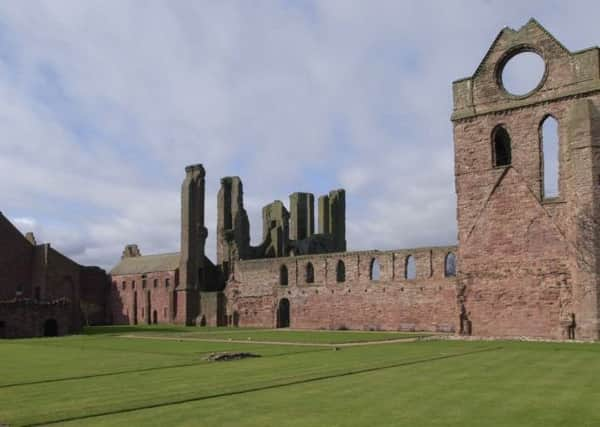Probe into effect of climate on Scots buildings


The event is to take place in Edinburgh later this month and will hear that some of the country’s most popular tourist attractions could suffer “catastrophic” harm within three to five years.
The Scottish Traditional Skills Training Centre (STSTC) is hosting the conference – billed by organisers as “the most significant gathering of conservation and climate experts assembled ever held in Scotland.”
Advertisement
Hide AdIt’s aim is to establish the extent of damage caused by recent changes to Scottish weather and to spread awareness of the crisis facing some of the country’s most renowned historical buildings and natural landscapes.
Buildings made from softer red sandstone, such as Arbroath Abbey, are at particular risk from increasing rainfall.
However, Dr Maureen Young, a conservation scientist for the Scottish Government heritage agency Historic Scotland, said that is was still possible to save some of the sites if protective measures were taken.
She said it was still possible to save some of these sites if protective measures were radically stepped up:
Dr Young added: “If you keep the buildings [watertight], then essentially they remain pretty stable.”
She said recent research by academics at Queen’s University Belfast suggested increased rainfall was leading to faster decay of building stone, by increasing levels of moisture within the stone, preventing it from periodically drying out, as intended by the original architects and engineers
Advertisement
Hide AdShe added that air pollution worsened this detrimental effect on older buildings by allowing sodium to enter the stone.
At even greater risk, Dr Young added, were historic coastal sites, such as the preserved neolithic village Skara Brae, the Unesco World Heritage Site in Orkney which, ironically, is believed by some experts to have been abandoned around 2500BC when an earlier phase of climate change caused temperatures to drop.
Advertisement
Hide AdAs well as being subject to the same damage from ever-increasing amounts of rainfall, coastal sites are also facing an increase in coastal erosion because of changes in sea levels which Young says could rise by “20 or 30 centimetres” in the next 10 years.
These sites are also more vulnerable to the “catastrophic impacts” caused by the growing turbulence of the Scottish winter: “You could lose a whole site in one big storm, potentially,” she said.
“We know from the records we have that a lot of our 18th-century buildings such as the New Town of Edinburgh were built in a period of relative drought, which explains why, when we get these intense bouts of rainfall, it can cause real problems with the stone, with the roofs and with the rainware. They simply weren’t designed for it, or for the continuous damp conditions which account for much of the biological growth on masonry.”
Marc Ellington, executive director of STSTC, said: “Until recently there were a lot of people who thought climate change was bunkum and it became a political issue, but it simply cannot be denied.
“We have never, ever seen the pattern of change that is currently emerging and there is a very strong consensus amidst science authorities on changes in the weather and climate, and also the melting of the polar ice caps.
“There is no doubt that we in Scotland are seeing a very different type of weather than we have ever seen before.
Advertisement
Hide Ad“We know from the records we have that a lot of our 18th-century buildings such as the New Town of Edinburgh were built in a period of relative drought, which explains why, when we get these intense bouts of rainfall, it can cause real problems with the stone, with the roofs and with the rainware.
“They simply weren’t designed for it, or for the continuous damp conditions which account for much of the biological growth on masonry.”